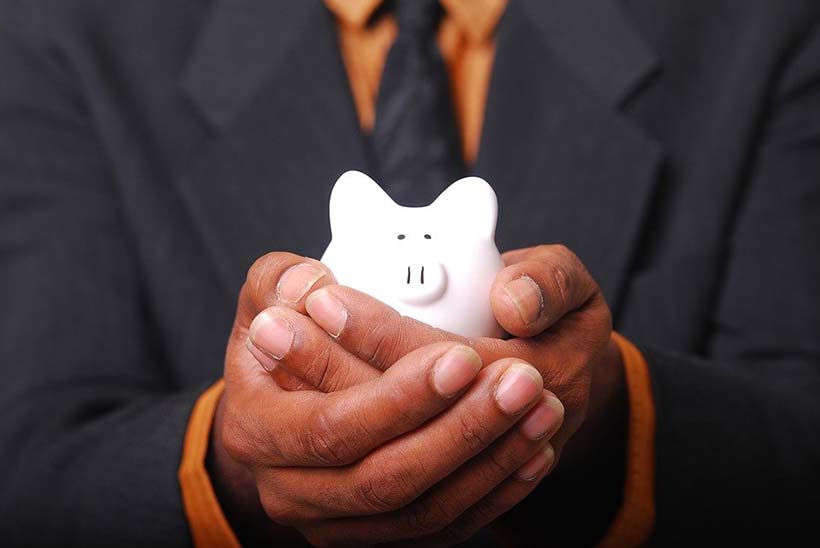It can be very easy to get sidetracked from your financial goals by buying products, services, or memberships you don’t actually need.
These poor financial decisions are often spur-of-the-moment, impulse buys and can end up being financial burdens that could catch up to you later.
A good question to ask yourself is: “how do I break bad spending habits to help reach my financial goals?”
Switching your wealth mindset is going to lead you to a healthy relationship with your finances.
Taking the time to write down bad money habits you need to kick will set you up for financial success.
Here are some valuable tips to increase your financial health that will help you make the most of your year.


Article Chapters
Don’t Get FOMO
FOMO stands for “fear of missing out” and occurs whenever you feel sad about or regret not going to an event or trip that your friends are planning.
FOMO is definitely understandable and happens to everyone, but it shouldn’t set you back monetarily.
If you truly think joining an upscale yoga studio or going on a trip to Thailand will help you achieve your goals, by all means, go for it.
Just make sure to consider whether or not FOMO is causing you to make that purchase instead of your own personal motivation.
It’s also important to note that tickets to events typically get more and more expensive as they get closer to the start date.
If you decide to go to an event, ensure that you purchase tickets ahead of time.
If you end up going last minute the chances of the price skyrocketing is likely, so it’s crucial that you plan ahead.


Don’t Hide Budgeting Goals From Friends & Family
Making your budgeting goals clear and transparent to your friends and family is a great way to maximise savings across several aspects of your personal life.
This helps prevent getting sidetracked by last-minute plans that could fall out of your projected budget.
It also makes your friends and family members more understanding if you decide not to spend more than what you are comfortable with on gifts.
If you are able to get a group of friends or family on board with your savings plan, there are plenty of fun and creative ways to collectively budget!
You can host potlucks, find group discounts for events, food, and household items, share subscriptions for online services, or even have challenges for who can save the most money over a period of time.
All in all, having a close group of friends or family to support your personal finance goals is a great way to remain motivated.


Watch Your Spending on Conveniences
Convenience purchases have been on the rise with on-demand services.
Though they are a nice treat once in a while, little thought typically goes behind them.
If you catch yourself making regular convenience and impulse purchases, it might be time to reevaluate your spending habits.
Eating out alone can get in the way of your budgeting goals, and on-demand food delivery services can really put your spending over the top.
Stop getting fast food every day and learn to make the dishes you enjoy yourself.
You can make these dishes in bulk, separate them into freezer containers, and enjoy them throughout the week.
Making a strong effort to improve on these spending habits earlier on, will take the stress out of paying for expenses and enhance your overall financial wellbeing.
Organising healthier spending habits and being adamant about planning out more affordable meals is a great habit to start in the new year.
As your spending habits mature, so will your financial portfolio.
Slowly you’ll witness yourself becoming more resourceful on those nights you don’t want to cook and will save you a lot of money in the long run.
Even making coffee at home rather than picking up a cup of Starbucks can make a difference.
Buying coffee is roughly five/six dollars a day which amounts to $2,000 a year.
Instead of spending that cash each morning, brew up a cup of coffee at home and transfer that money into your savings.
Set a Savings Goal & Stick With It
Something that seems pretty obvious to do, but happens more than we think it does is not setting aside money for saving or investing.
Many people end up spending more than what they actually have.
Taking on loans and using credit cards too often can easily place you in debt that can quickly spiral out of control with negligence and high interest.
Not buying more than you can afford, spending less, and setting aside savings funds will alleviate this bad habit.
I like to use the 50/20/30 budgeting rule to form the framework for setting my personal finance goals for the year.
For those who are unfamiliar, the rule is based off your after-tax pay and is split to spending 50% on only the necessities such as rent or mortgage, followed by 20% going towards your savings, and finally, 30% being allocated towards whatever you want it to, like hobbies, shopping, or eating out.
From here, you can modify the percentages and allocations to whatever your 2020 budgeting goals are.
For example, if you want to save up for a house or new car, you might switch the 20% and 30% to bump up your savings.
Some banks and credit unions will allow you set up your accounts to automatically have a portion of your paycheck to be split into separate accounts when it lands in your account, which is a great way to help you achieve your goal for the year.
Don’t Be Afraid To Spend
On the opposite end of the budgeting-spectrum is being afraid to spend anything at all.
If you have been saving to the point where your health, happiness or general wellbeing is taking a toll, it’s time to break that habit.
Spending “fasts” can also result in irresponsible and unpredictable splurges once they are over.
It’s definitely better to maintain a healthy balance of spending and saving throughout the year.
This also encourages good, consistent behavior instead of periodic episodes of irresponsible money management.

